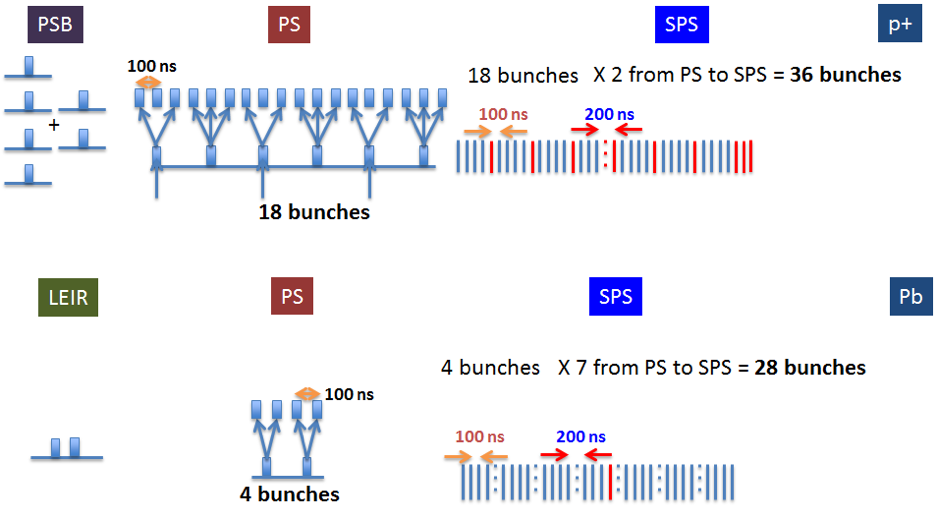For its last four running weeks of the year the LHC is colliding protons (p) with lead ions (Pb). This not only presents a challenge for the collider itself, but also for the six accelerators involved in producing the beams, which have to provide the bunches that will eventually collide in ALICE, ATLAS, CMS and LHCb. Two different injector chains boost and deliver the two different types of particles to the LHC. For the protons, the chain is Linac 2, the PS Booster (PSB), the Proton Synchrotron (PS) and the Super Proton Synchrotron (SPS), and for the lead ions, it’s Linac 3, the Low Energy Ion Ring (LEIR), the PS and the SPS.
The challenge for the injector complex is twofold. Firstly, the injection pattern of the protons must match with that of the lead ions, in order to maximise the number of colliding bunches in the LHC.
The ideal situation would be to have the same number of bunches and the same bunch spacing for both protons and lead ions. However, the lead ion injection technique sets a constraint. LEIR and the PS can only provide the SPS with a lead ion beam consisting of four bunches spaced by 100 nanoseconds (ns), a different pattern than in normal p-p operations where the proton beam consists of 72 bunches spaced by 25 ns.
Secondly, the intensity of the proton beam must also be reduced to correspond to that of the lead ions. For p-Pb operations, the proton bunches need to be five times less intense than usual.
The best possible match that the injector team has found is to inject a train of two batches each consisting of 18 bunches of protons and a train of seven batches consisting of four bunches of lead ions (see picture for more details).
The injector chain is already benefiting from the results of the LHC Injector Upgrade (LIU) project, which aims to upgrade the beam performance of the injectors for the future High-Luminosity LHC. Since the beginning of the run, the Pb injectors have delivered an intensity three times greater than the original design value. This was a major contributor to reaching peak luminosity about six times greater than expected when the proton-lead programme was planned just a few years ago.
At the time of writing, the LHC is still on course to achieve all the physics goals of this run, in spite of all the technical mishaps encountered, such as a power cut last week and a quench on 24 November.
When not filling the LHC, the injector chain provides beams for lots of other users, including the Antiproton Decelerator, AWAKE, HiRadMat, and the North Area.

